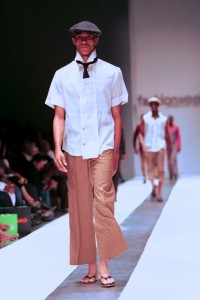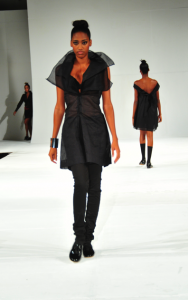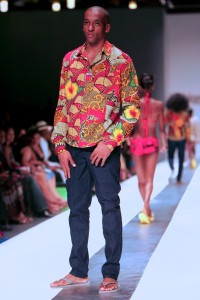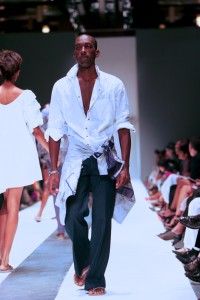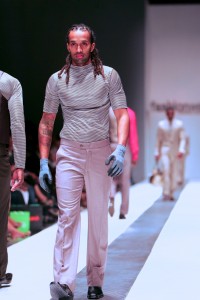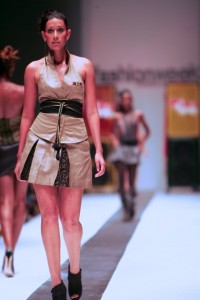 Fashion Week Trinidad & Tobago: Rea McNamara picks from the Front Row
Fashion Week Trinidad & Tobago: Rea McNamara picks from the Front Row
The audience was tense with anticipation: the Haute Caribbean grand dame was running late, and a lull loomed after local soca star Swappi cut his performance due to mic problems. The drama heightens when two beefy shirtless male models finally stride out in military garrison caps, followed by high fashion with just the right masquerade excess. (I fell for the popped collar and styled sky-high bouffant hair that went with a sleeveless iridescent taffeta cocktail frock in flashy coral and jade.) “I wanted to show the influence of Carnival on couture,” Pegus said afterwards. “And what we can bring to the international table with a Caribbean look.”
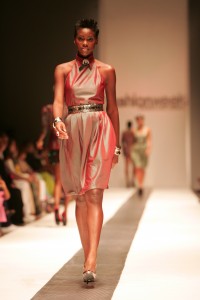 More FWTT 2010
More FWTT 2010
Fashion Week Trinidad & Tobago 2010
Rea McNamara picks from the Front Row
In its third year, Fashion Week Trinidad & Tobago — a sold-out, must-see rivaling Caribbean Fashion Week — strutted out over 50 local and regional collections that organizers catch-phrased “cosquelle couture”, reclaiming that old Côté ci Côté la “to dress outrageously mismatched” definition. But the 125 foot runway — whether on the sandy beaches of Tobago’s Pigeon Point or at the posh Hyatt Regency Trinidad — was world class. Consider this my front row wave of the flag to the new style order.
Check out all of Rea McNamara’s picks
Anya Ayoung Chee
Millhouse
The Cloth
Meiling
Claudia Pegus
]]>
Fashion Week Trinidad & Tobago: Rea McNamara picks from the Front Row
Full disclosure: I have a particular fondness for this minimalist (I grew up coveting my mom’s 1970s vintage pieces!). Even though this Caribbean Junya Watanabe is known for a steadfast noir day-to-night uniform, this season she’s gone self-referential, designing a black organdy collection recalling the subtle folds of Japanese origami volumes in its construction. (She concedes, “the drama of the collars is probably subconsciously Caribbean mas.”)
Photography courtesy of Meiling
www.meilinginc.com/
More FWTT 2010
Anya Ayoung Chee
Millhouse
The Cloth
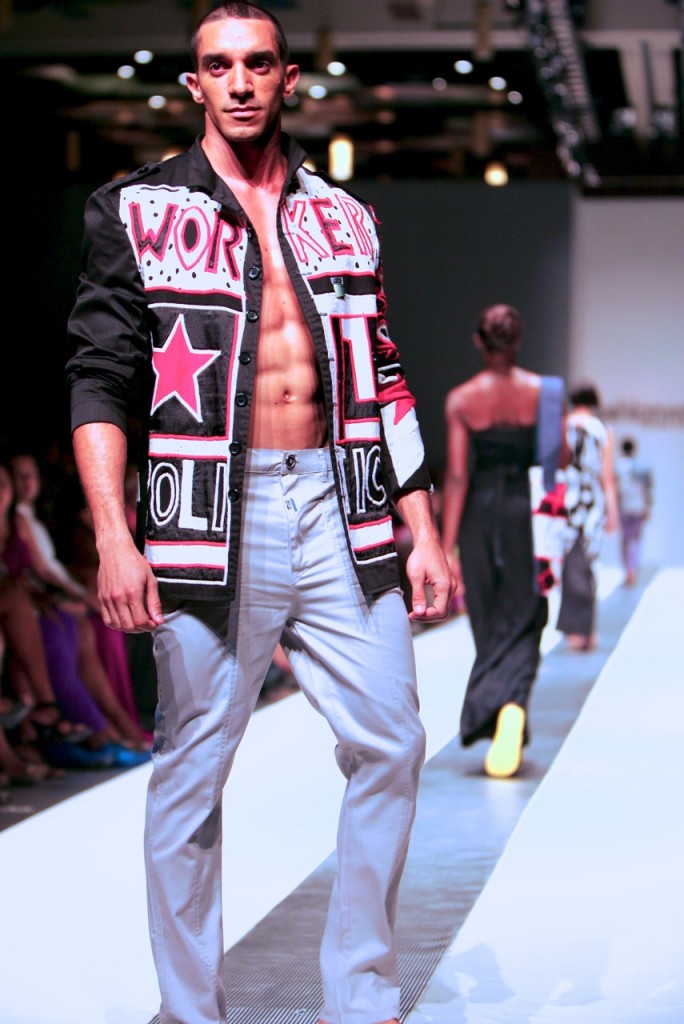 Fashion Week Trinidad & Tobago 2010: Rea McNamara picks from the Front Row
Fashion Week Trinidad & Tobago 2010: Rea McNamara picks from the Front Row
After Claudia closes the shows, The Cloth’s Robert Young and I ride the elevator up to my suite with buyer Ingrid Laballe. I had pulled pieces for a shoot, so Robert’s iconic appliquéd designs were left on a rolling rack in my room. Laballe flicks hangers, eyeing orders for her Pointe-à-Pitre-based Kod, one of the top Caribbean fashion boutiks. “I like this very much,” she tells Young of his patchwork ‘WORKER’ nehru denim jackets, harkening to his political roots as a former trade unionist’s son.The colourful lady pom-pom shorts however, “will need to be bigger. You know how my customers are a little older.” The request is softened by Laballe’s smile; a deal is made, hinting a good future for Trini 2 de Bone chic.
Photography Kerron Riley
More FWTT 2010
Anya Ayoung Chee
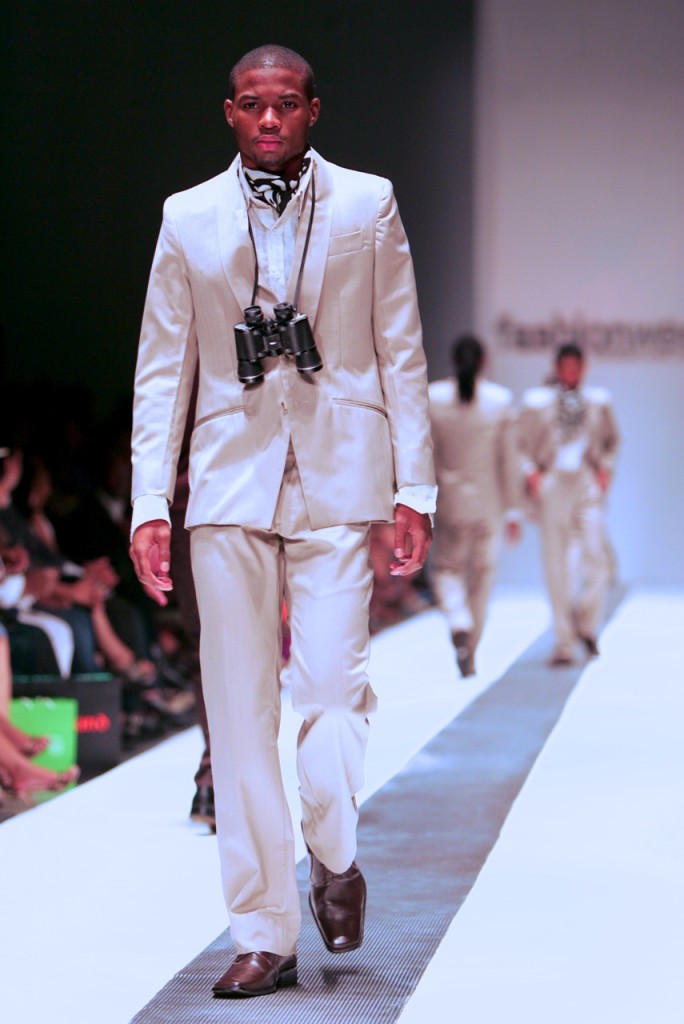 Fashion Week Trinidad & Tobago: Rea McNamara’s picks from the Front Row
Fashion Week Trinidad & Tobago: Rea McNamara’s picks from the Front Row
As Trinidad & Tobago’s lone menswear label, Millhouse seemed set on sartorializing the anti-hero assassin in 1973′s The Day of the Jackal. It was a crisp early ’70s throwback: square-finished lapels on fitted khaki suits with graphic black and white neck scarves. But designer Gregory Mills (who founded the ten- year-old label with his wife Coline Baptiste-Mills) cites the Trini saga boy comeback as another inspiration. “Downtown, you’d see a real hub of these guys dressing the finest. They’d stand at the corner in three piece suits with ruffle shirts,” recalls Mills. “We’ve been trying to recapture that era.”
Photography Kerron Riley
More FWTT 2010
Anya Ayoung Chee
 Fashion Week Trinidad & Tobago: Rea McNamara picks from the Front Row
Fashion Week Trinidad & Tobago: Rea McNamara picks from the Front Row
“The structured part of the uniform is very post-colonial,” the former Miss Trinidad & Tobago Universe says of a schoolgirl kilt with sexy black and gold lace peaking out of the folds. The designer is behind the upstart Pilar label. I grew fond of its debut last season, remixing the Bobo Shanti rastafari culture’s boho African print and brightly coloured robes. It was interesting to see Meiling’s protégé go further on the subcultural mining, this time finding inspiration in island uniformity.
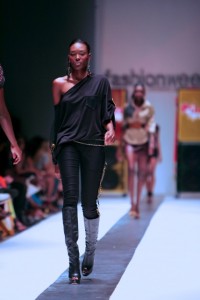
Photography Kerron Riley
More FWTT 2010
Millhouse
 From Vancouver to Montreal, Caribbean festivals are alive and thriving
From Vancouver to Montreal, Caribbean festivals are alive and thriving
BY: Simona Siad
“Wherever you find Trinidadians, you will find a carnival.”
That’s according to Henry Antoine, president of the Montreal Carnival Development Foundation, who is chatting with me on the phone from Montreal. Antoine decides to prove it to me.
He asks me who else I’ve interviewed and I tell him I just talked to the chair of the Caribbean Days festival in Vancouver who told me he is also from Trinidad.
“What’s his name?” he asks me.
“Rudolph Marshall,” I reply, not quite sure what he is hinting at.
“I know him,” he says, howling in laughter.
He dials his number and within seconds we are in a three-way, cross-country conversation as the two men laugh and reminisce over the “old days” of carnival in Montreal, ask each other how their wives are doing and lament the difficulties of finding festival sponsorship.
While our country may be vast and wide, the Caribbean community and festival circuit certainly isn’t. And it seems almost everyone who puts on such events, from Vancouver to Montreal, knows someone involved in another city or has a cross-Canada festival connection.
Despite this, Caribbean festivals in many provinces remain relatively unknown to the larger general Canadian public. For example, many people do not know that the Caribbean Days festival in Vancouver is the largest cultural event of its kind in B.C. and has been around since 1988. Or that Edmonton has thousands of people frequenting its Cariwest festival, self-described as the “hottest fete in de West,” every summer.
Organizers say because of a lack of nationwide attention, many Canadians do not realize the history of these festivals and how ingrained they are in their respective cities’ cultures. “Our parade in Montreal — just like Toronto’s — goes on for five hours on the road. It was first begun in 1974 by a man named Winston Roberts from St. Vincent,” says Antoine, who is also the president of the World Carnival Commission.
“The Union United church was having its 50th anniversary and they asked him what they could do to celebrate. He put a truck on the road with music, and out of that came the big idea for carnival. There were steel bands, everyone came out from the different islands and it was a big thing. Now we have over 250,000 people coming out every year to celebrate.”
The Montreal festival, says Antoine, is in a process of change this year. They have changed the name. The old moniker, Carifiesta, was used under the Caribbean Cultural Festivities Association. The new, bilingual name, Carifete, came with the creation of the Montreal Carnival Development Foundation.
He says they have been using Toronto’s Caribana as an example of what can happen when you build your infrastructure, receive corporate sponsorship and employ a year-round staff.
“In putting the foundation together we are going to be doing much more than a parade once a year. We want to give scholarships to young people, find a way to teach them, build costumes and teach them the art of Carifete,” says Antoine.
“We are going to be out there, looking for sponsors. Right now we have nothing in terms of infrastructure. We have to set up our own infrastructure and become self-sufficient.”
In Vancouver, the emphasis is very much on multiculturalism and being inclusive to culture, according to Marshall, who is the Chair of the Caribbean Days Festival Committee.
He explains how you’re likely to see groups from the Middle East, China and various islands taking part in the Caribbean Day parade and their festivities. “The whole idea is to show our culture. So what we did in the early days was have arts and crafts, show videos and try in the process to introduce other cultures,” says Marshall. “It’s grown to be one of the biggest multicultural festivals on the B.C. mainland at the moment, but it’s a lot of work. We have so many things to take care of: the finance committee, the venue and approvals, the street parade, the beer gardens, the volunteers and performances.”
Despite their struggles with sponsorship, the long volunteer hours and the hard work it takes to continue, both men agree they see a strong reason for moving forward and promoting Caribbean culture across Canada.
“I was born into a culture. I come from a cultural background. In 1967, I immigrated to Canada and I felt it was important to preserve our cultural heritage while we are away from home and do it in a way that can be representative of the tourism industry in Montreal,” says Antoine. “I will always be involved in celebrating culture. If you don’t have culture, you are lost.”
Carnival across Canada
Name: Carifete (formerly known as Carifiesta)
City: Montreal, Quebec
Known for it’s larger-than-life parade put on by Quebec’s Caribbean community, the festival has grown and adopted groups of Haitian origin and some groups from the Latin community to make it representative of the Montreal community.
Contact: [email protected] or carifiestamontreal.com
Name: Caribbean Days
City: Vancouver, British Columbia
Known for being multicultural and inclusive, the event draws crowds of exuberant fun-lovers to North Vancouver’s Waterfront Park for a weekend of parading, dining and dancing in the sunshine.
Contact: [email protected] or caribbeandays.ca
Name: Cariwest
City: Edmonton, Alberta
Known for being the “hottest fete in de West,” Cariwest is celebrating it’s 25th anniversary this year with a colourful “Costume Extravaganza,” West Indian cuisine and its entertainment-filled Caribbean Village.
Contact: [email protected]
Name: Caribfest
City: Barrie, Ontario
Known for it’s dinner and dance cruises, and diverse range of Caribbean music, this summer Barrie will come alive as the masqueraders dance around the grounds of the Barrie Event Centre.
Contact: [email protected] or caribfest.ca
 The King of Caribana and NBA star talks candidly about career, community, carnival, kids and his ongoing connection to his Toronto home.
The King of Caribana and NBA star talks candidly about career, community, carnival, kids and his ongoing connection to his Toronto home.
BY: Duane Watson
Standing at 6’11″ and 265 pounds, Jamaal Magloire often gets the “Do you play basketball?” question from strangers. And while he’s an NBA veteran, playing in the league for the past eight seasons, he hardly lets his skills on the hardwood define him as a person.
Magloire is an old soul, and at the golden age of 31, he’s a throwback for his generation. From his style of play on the court, to the pride he takes in his Trinidadian heritage, and to the importance he places on giving back, he is a man with an old-school ethic.
He’s not one to wear his emotions on his sleeve, yet if you slowly take the time to peel away the many layers of Jamaal Magloire, you uncover a man who prides himself on his family, his culture, his community and his city.
Coming off the bench for the Miami Heat in the 2009 NBA Playoffs, the Scarborough native takes the court with his usual game face. The rigid, emotionless lines of his face and his stoic demeanour give little hint of what lies beneath.
Executing his role on the team with workmanlike efficiency, he makes a solid contribution and plays his position with little glamour or glitz. It’s that quiet approach that made him the last player from Toronto to be drafted, an approach that has defined his play in the NBA for almost 25 years.
Nowhere was the effectiveness of his understated style more evident than at the 2004 All-Star Game in Los Angeles, where he quietly led his squad in scoring, outperforming flashier teammates Allen Iverson, Tracy McGrady and Vince Carter.
Magloire by nature is a low-key guy. Sitting on the couch thumbing through his Blackberry, he’s wearing a navy blue t-shirt, blue jeans, a black baseball cap and a pair of Air Jordans. So how does he transform from a calm, mild-mannered giant to a boisterous band leader for a vibrant, colourful and electric band like the Toronto Revellers?
“I’ve played in Caribana every year, for the most part, from the age of five,” he says. “My mother and father were involved in a band called D’Regulars. They were usually the last band at Caribana and would close the parade,” he says. “I just began to fall in love with the experience from there and all those things contribute to what you see today in my band.”
Easily the tallest and quite possibly the youngest band leader in Caribana history, he’s also been effective in the role: the Revellers have been crowned Band of the Year for the past two years in a row. Magloire attributes their success to good character: “The unit that we have is so focused and so together that it translates into everything that we do. They are a part of our family, and when you take care of people they will take care of you.”
Citing his first J’ouvert experience at Carnival in Trinidad as his “baptism,” Magloire has a sincere desire to ensure that a steady diet of BET doesn’t dilute the island flavour from the youth of today. “One of the reasons I got into Caribana is because I feel like this generation is starting to stray from their Caribbean roots,” he says. “All we see on TV and hear on the radio is hip-hop and R&B and there’s nothing wrong with that.
I just feel we’ve still got to embrace our culture. My son participates in Kiddies Carnival every year and he’s an American, so I’m teaching him about it. And I just want this to go on forever.” Noting that soca makes up about 50 per cent of his iPod library, it’s readily apparent he takes his music very seriously.
Another thing he takes quite seriously is community. While he hasn’t spent more than a few months at a time in the city during the past 10 years, he’s very familiar with the gun violence in Toronto. Magloire’s younger brother was fatally shot eight years ago. “Gun violence is unacceptable. There are other ways of handling problems than shooting and killing.
I think that the way to curb gun violence is to provide opportunities for young people.” A man of his word, Magloire has been providing opportunities for young people for some time, with the Jamba Cats boys and girls basketball clubs, his annual basketball camp and the Miss Queen of the Islands Pageant.
He started the pageant three years ago to promote cultural awareness and unity amongst the Caribbean Islands, and facilitate growth and development of character in young women. “When we address young people, we often talk about men; I think so many times women are forgotten,” he says. “It’s a 12-week life skills program that began as a competition; I think they learn a lot and take a lot away and it’s a great confidence booster for them.”
While many applaud Jamaal for his connection to the community, some would argue that he’s in the mix too much. During the summer, sometimes he can be found dropping in for games in local men’s basketball leagues, at concerts, in the club, or just being out with his boys.
However, he views it differently. “I think I’m very accessible,” he says. “I think that’s what people like. Sometimes you have guys in positions of fame, and you can’t talk to them and you can’t reach out. I think what separates me is that I’m just like everybody else. I was born and raised in Scarborough and it’s hard to change that now.” As the old expression almost goes, you can take the man out of Scarborough, but you can’t take Scarborough out of the man.
“I owe it all to the support that I’ve gotten over the years. I feel obligated to do whatever I can in my power to stay involved with Toronto and be a part of the grassroots, a part of the kids and the adults, because these are the people who are watching my games and praying for me when I’m not around.”
As an NBA free agent this summer, Magloire is a player for hire. Would he consider coming home to play for the Toronto Raptors? “Yes, I want to leave all my options open,” he says. “Toronto is a great place and I see myself as one of the ambassadors of this city. I’m just going to focus on the things I can control and work as hard as I can on my body over the summer and see what happens in the fall.”
If Magloire ends up playing for the home team, he won’t have to endure those “Do you play basketball?” questions as often. In this city, many people are already well aware that he does that, and so much more.
]]>
